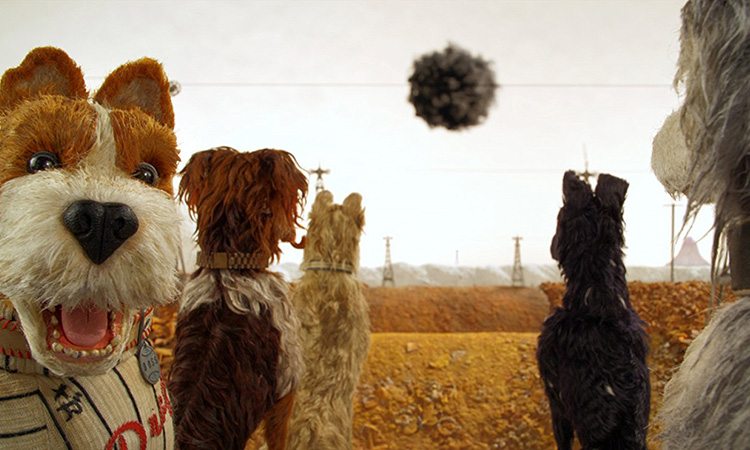Wes Anderson is back and more eccentric than ever. Despite the upbeat tone that pervades most of his filmography and his penchant for an innocuous brand of surrealism, moviegoers’ opinions of Anderson are split just as evenly as his shots. To some, he’s an idiosyncratic visual genius; to others, he’s pretentious hipster garbage. “Isle of Dogs” isn’t going to change anyone’s minds.
“Isle of Dogs” is stop-motion animation with a plucky score, it takes place in a dystopian Japan, features a rogue band of vocal dogs, is inspired by legendary Japanese filmmakers Kurosawa and Ozu, and it’s pure Wes Anderson. And its title is a pun. You don’t get quirkier than this, folks.
The dogs of Megasaki City, the capital of near-future Japan, are suffering from outbreaks of dog flu and snout fever. There’s no known cure for either affliction, leading many beloved house pets to succumb to mangy sickness. Megasaki’s despotic Mayor Kobayashi concocts a solution: capture all the city’s dogs and forcibly deport them to Trash Island, a floating garbage heap off the coast of Japan. Months later, a twelve-year-old boy flies a makeshift plane to Trash Island to rescue his mutt, encountering a personable group of pups along the way.
Will Atari find his lost dog? Does Mayor Kobayashi have a secret, sinister reason behind his hatred of the canine race? If it sounds silly, that’s because it should be. Wes Anderson’s clean-cut, vivacious style doesn’t lend itself to serious themes as well as it does to ridiculousness. That’s largely why his previous stop-motion effort “Fantastic Mr. Fox” is his best movie, despite what naysayers claim. The dramatic zooms and swivels of Anderson’s cinematography are a perfect match for the absurdity of a future-telling pug.
Stop-motion isn’t just a fitting outlet for Anderson’s silly side: it also allows him to demonstrate his masterful control over the visual craft. Live-action sets require the director to wrangle real life into symmetrical shapes and sharp colors; animation allows his visual precociousness to create a world from the ground up. “Isle of Dogs” is a world of immaculate detail and loving touches. Every shot is an ocular dessert.
The ears receive treats too, thanks to a jaw-dropping assemblage of a voice cast. Oscar-winning actresses Frances McDormand and Tilda Swinton, Wes Anderson staples like Bill Murray and Edward Norton, powerhouses such as Bryan Cranston and Scarlett Johansson—that doesn’t even begin to cover it. Yoko Ono even cameos as a scientist named Yoko Ono. Talent leaps from the cast like fleas from a stray’s coat.
The story stays simple and eminently enjoyable. It’s not particularly engaging, as it’s paced briskly and fragmented into scenes that work more as standalone spectacles than flowing narrative arcs. Anderson seems concerned with actualizing all of his dogged ideas, no matter how well they fit together. That’s not to say “Isle of Dogs” is incoherent—it’s just unconcerned with goals greater than fun moments and obvious social commentary.
There’s already controversy over potential appropriation of Japanese culture, and though I mainly saw a tribute to Anderson’s Japanese influences, it’s not for me to decide. I can call out the white savior complex, though: so many Japanese characters to choose from, and the leader of the charge against Mayor Kobayashi is a white exchange student? That’s problematic for a film otherwise devoted to Eastern culture.
Despite the human misrepresentation, “Isle of Dogs” gets dogs exactly right. Above all, the film is a loving picture of the bond between dogs and their masters, and it’s handled as wholesomely as pawsible.
★★★★ (4 out of 5)





